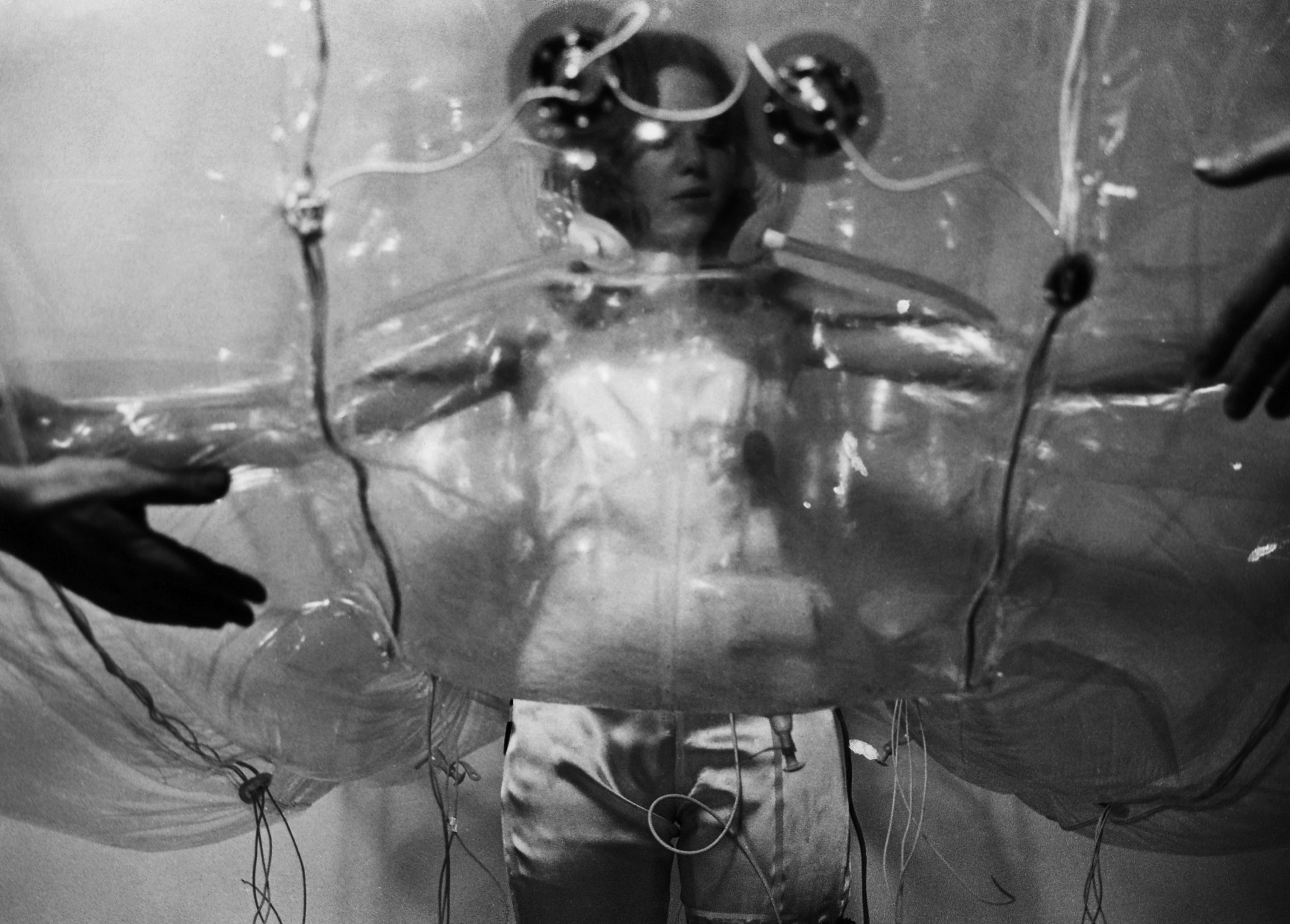This essay comes out of my current dissertation research on the early work of Coop Himmelblau. I would like to thank Wolf Prix, Marina Jovanovic, Thomas Haider, and Michael Kundi, as well as my colleagues Benjamin Murphy, Nick Risteen, Addison Godel, and Eva Schreiner for conversations and feedback. Wolf Prix, Michael Holzer and Helmut Swiczinsky originally called themselves Bau-Cooperative Himmelblau when they founded the group in 1968, but were also referred to as simply “Himmelblau” until 1970, when they are more consistently referred to as Coop. Himmelblau, Coop-Himmelblau, or Coop Himmelblau. Michael Holzer left the group in 1971. The firm was later renamed Coop Himmelb(l)au, which is the name that the office operates under today. Helmut Swiczinsky retired in 2001 and Dieter Dreibholz joined as partner in 2000. Wolf Prix and partner today run the office. Since I am dealing with the historical group and not the contemporary office I use the denomination Coop Himmelblau.
This argument has been made in different iterations in Michael Hardt and Antonio Negri, Empire (Cambridge, Mass.; London: Harvard University Press, 2000); Paul Rabinow and Nikolas Rose, “Biopower Today,” BioSocieties 1, no. 2 (June 2006): 195–217; Nikolas S. Rose, Politics of Life Itself Biomedicine, Power, and Subjectivity in the Twenty-First Century (Princeton, NJ: Princeton University Press, 2007).
Ole Jacob Madsen, Optimizing the Self: Social Representations of Self-Help (Hove, East Sussex: Routledge, 2015).
Gilles Deleuze, “Postscript on Control Societies,” in Negotiations, 1972-1990 (New York: Columbia University Press, 1995), 179–83.
Grahan Chedd, “Mental Medicine: Self-Help for Your Insides?,” New Scientist and Science Journal, September 9, 1971, 563.
David Shapiro et al., “Effects of Feedback and Reinforcement on the Control of Human Systolic Blood Pressure,” Science 163, no. 3867 (February 7, 1969): 588–90.
Jonas Gerald, “Profiles: Visceral Learning: Neal E. Miller,” New Yorker, August 19, 1972, 34.
“Neal E. Miller Is Dead at 92; Studied Brain and Behavior,” New York Times, 2002; Gerald, “Profiles.”
Neal E. Miller, “Learning of Visceral and Glandular Responses,” Science 163, no. 3866 (January 31, 1969): 442.
Anne Harrington, “Chapter 4: Broken by Modern Life,” in The Cure Within: A History of Mind-Body Medicine (New York: W.W. Norton and Company, 2008), 139–74.
Michael Shamberg and Raindance Corporation, Guerrilla Television (New York; Chicago; San Francisco: Holt, Rinehart and Winston, 1971), 1.
Wolf Prix, Interview, January 31, 2017, Vienna.
Wolf Prix, Michael Holzer, and Helmut Swiczinsky, “Coop.Himmelblau Zur Ausstellung in Basel, Galerie Stampa Und ‘offener Saal’, Kunsthalle,” Kunst Nachrichten 7, no. 10 (June 1971).
Manfred Haider, Paul Spong, and Donald B. Lindsley, “Attention, Vigilance, and Cortical Evoked-Potentials in Humans,” Science 145, no. 3628 (July 10, 1964): 180–82; Manfred Haider and Donald B. Lindsley, “Microvibrations in Man and Dolphin,” Science 146, no. 3648 (November 27, 1964): 1181–83; Manfred Haider, Paul Spong, and Donald B. Lindsley, “Selective Attentiveness and Cortical Evoked Responses to Visual and Auditory Stimuli,” Science 148, no. 3668 (April 16, 1965): 395–97.
Thomas Haider, Interview, Vienna, September 3, 2017.
Manfred Haider, “Umwelteinflüsse Im Wohnbereich,” Wohnbauforschung in Österreich, no. Heft 1/2 (1972): 1.
Prix, Holzer, and Swiczinsky, “Coop.Himmelblau Zur Ausstellung in Basel, Galerie Stampa Und ‘offener Saal’, Kunsthalle.”
Haider, “Umwelteinflüsse Im Wohnbereich,” 6.
Edmund Jacobson, Progressive Relaxation (Chicago Illinois: The University of Chicago Press, 1938).
Haider, “Umwelteinflüsse Im Wohnbereich,” 6.
Gary Wolf, “The Quantified Self,” The New York Times, February 5, 2010, ➝.
Gary Wolf, “Gary Wolf: The Quantified Self,” TED, video, June 2010, ➝.
Rad Stulberg and Steve Magness, “How Googlers Avoid Burnout (And Secretly Boost Creativity),” Wired, June 11, 2017.
Clare Garvie, “Facial recognition is here. The iPhone X is just the beginning,” The Guardian, September 13, 2017, ➝.
Apple, “A bold way to look at your health,” ➝.
Jane Bennett, Vibrant Matter: A Political Ecology of Things (Durham, N.C.: Duke University Press, 2010), 13.
Ibid., 13.
Positions is an initiative of e-flux Architecture.
